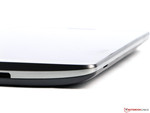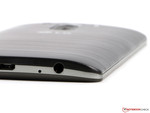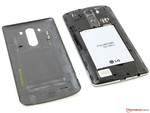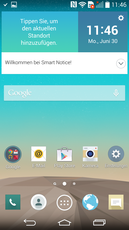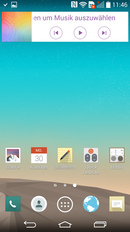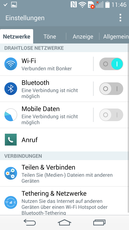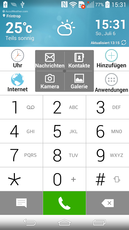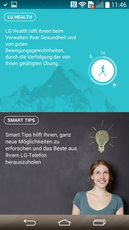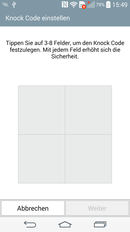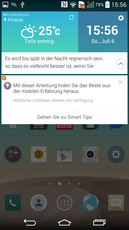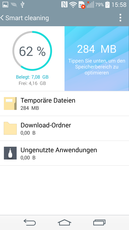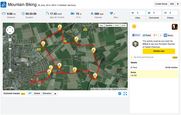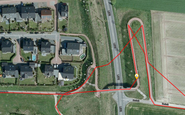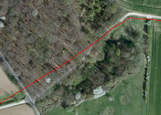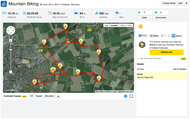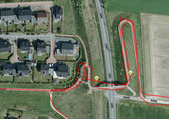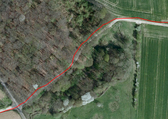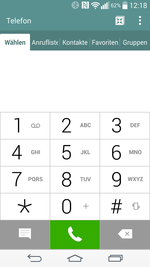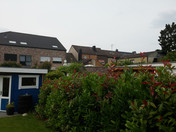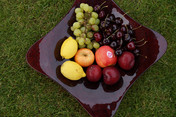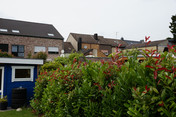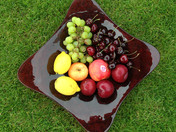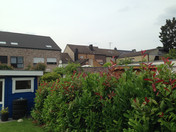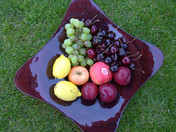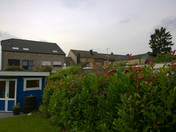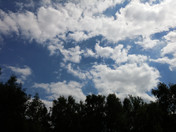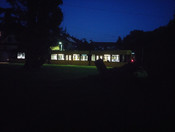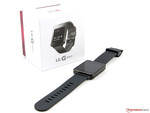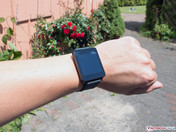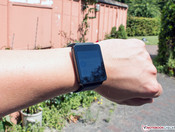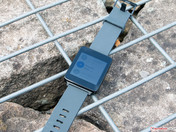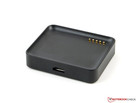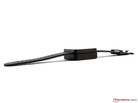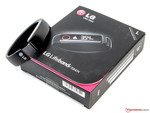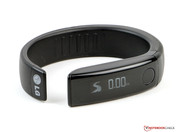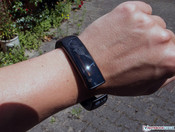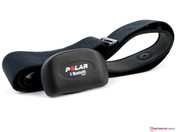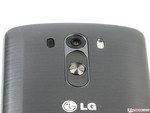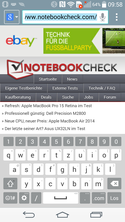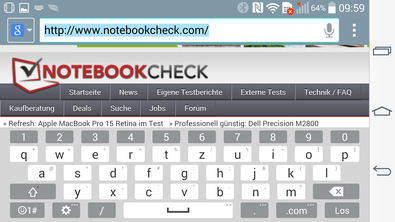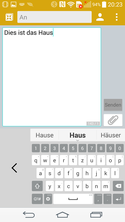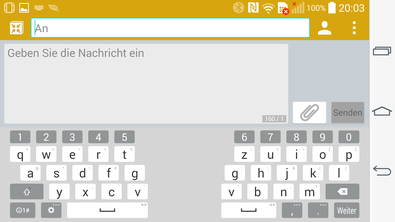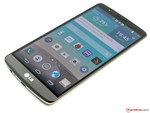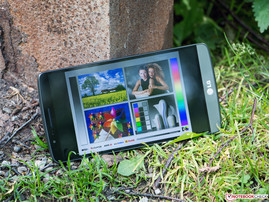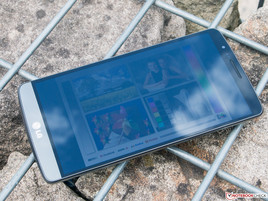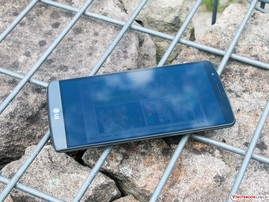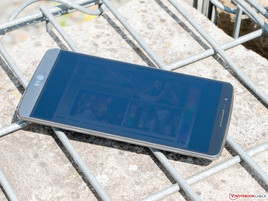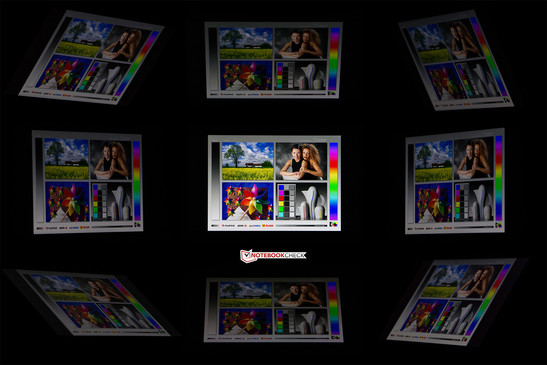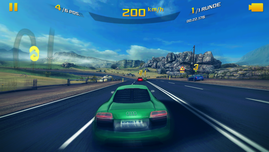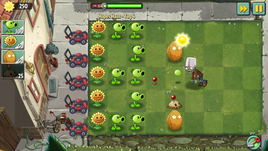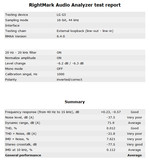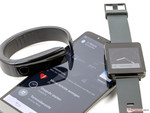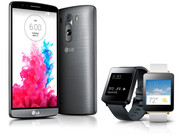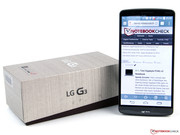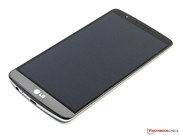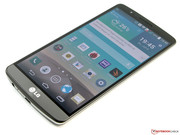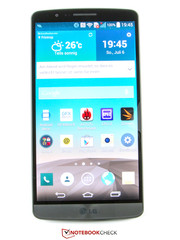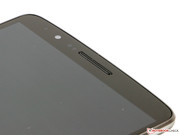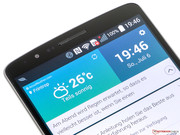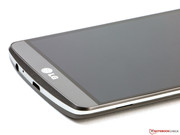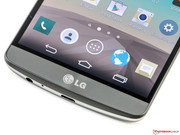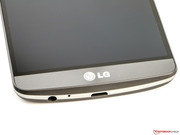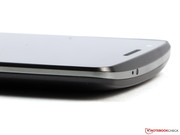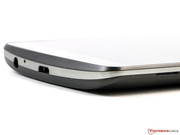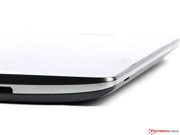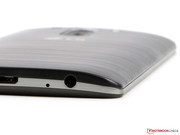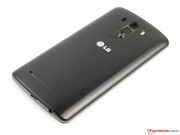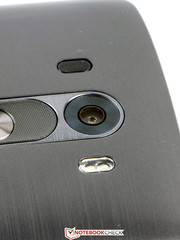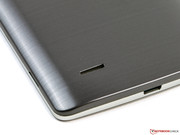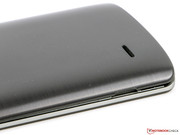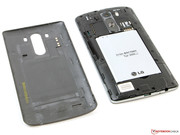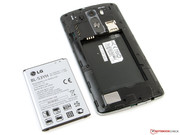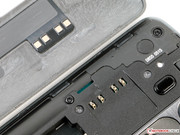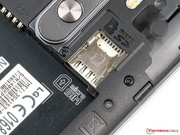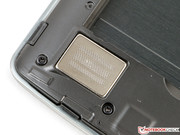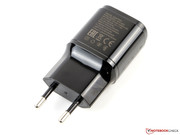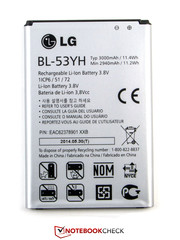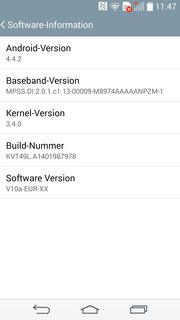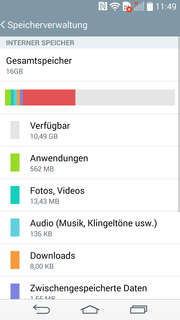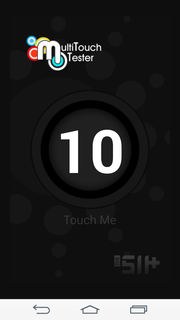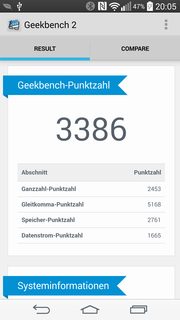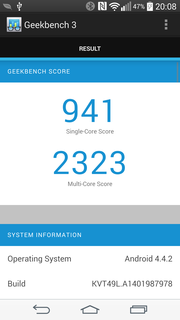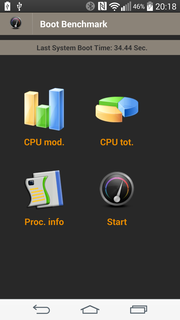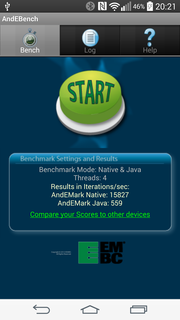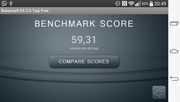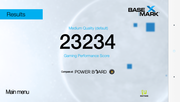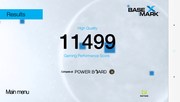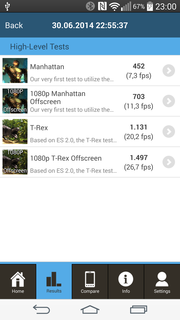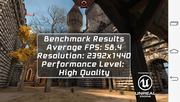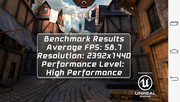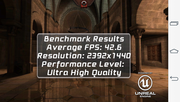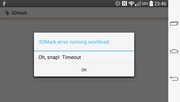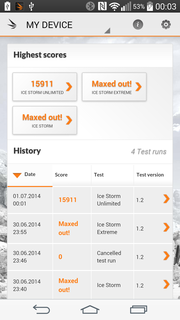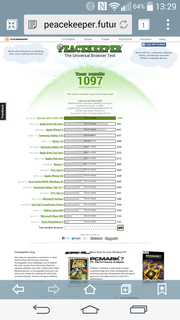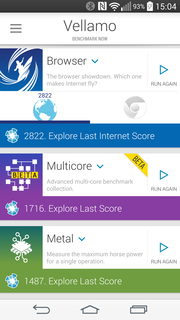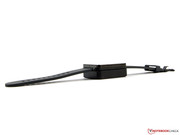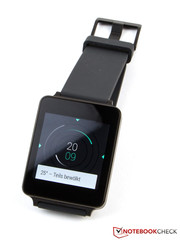LG G3 Smartphone and LG G Watch Review

For the Original German review, see here.
The competition did not sleep either, but the LG G3 might still offer enough superlatives to be at least on par with the other high-end smartphones. The display is even larger than that of its competitors, measuring 5.5 inches, but its true killer feature is the enormously high resolution of 2560x1440 pixels, making the LG G3 the first smartphone with a WQHD panel. The camera not only sports 13 megapixels, it is also supposed to come with a revolutionarily fast laser auto focus system that supposedly even works under unfavorable low-light conditions. The recent Qualcomm Snapdragon 801 may very well allow the G3 to take the top spot in terms of performance. While the battery may not be larger than that of its predecessor, the LG G2, 3000 mAh is still more than what most of its competitors offer - still, the high-resolution display of the LG G3 might lead to increased power consumption and thus reduced battery life.
Our test device is the last Android flagship smartphone to reach the market in 2014. Its competitors, the HTC One (M8), the Samsung Galaxy S5, the Huawei Ascend P7 and the Sony Xperia Z2 have all been available for some time, but they must make do with "just" a Full HD screen. Other flagships are the Nokia Lumia 930 powered by Microsoft's Windows Phone 8.1 and the Apple iPhone 5S. All of these are strong contenders for the top spot, with a lot of improvements when compared to their predecessors. The LG G3 is definitely in the right company here, although it does have some weaknesses, as we will show.
In addition, we want to take a closer look at the optional LG G Watch powered by Android Wear, one of the first smartwatches powered by the new, heavily modified Android smartwatch OS. We were also able to spend some time with the LG Lifeband Touch.
Although the LG G3 is made from plastic, it sports a beautiful chassis. The plastic also helps keep the weight down (at a mere 149 grams). Only the Samsung Galaxy S5 (145 grams) and the Huawei Ascend P7 (124 grams) are even lighter (~5.3, 5.1 and 4.4 ounces respectively). Due to the large display, the dimensions of the LG G3 exceed those of most of its competitors, but thanks to the ergonomically shaped rear panel (quite similar to that of the HTC One), the G3 is comfortable to hold. The LG G3 is available in the following hues: Titanium, white and gold.
Overall build quality is great. The display covers almost the entire front of the device, leaving a good impression mainly thanks to the small bezels around it. There are no uneven clearances, and the G3 is highly torsion-resistant (though it does make some noise when bent) as well as pressure-resistant: Even when a lot of force is applied to the narrow bezel, no image distortions could be noted on the screen. Although the rear panel is made from plastic, it does indeed look like metal - which should not come as a surprise as LG claims to have included fragments of metal into the plastic to yield a more premium appearance.
The rear panel can be taken off, revealing the replaceable battery below as well as the MicroSD and micro SIM card slots. The repair specialists of uBreakiFix claim that the LG G3 is well suited to small repairs as it is rather easy to access all major components. Still, such maintenance should always be performed by professionals. Thus, the chassis of the LG G3 impresses on all fronts - with great looks, many maintenance options and a high build quality.
The port at the bottom of the LG G3 is a so-called SlimPort which allows for USB 2.0 compatibility (micro USB), is capable of charging the device and supports any SlimPort HDMI connector for external resolutions of up to 1080p (1920x1080 pixels). Still, MHL 3.0 support for playback of UHD media would have been preferable. The port does support USB OTG allowing connection to external hard drives or input devices.
The MicroSD card slot supports cards with up to 2 TB (SDXC), the theoretical maximum of the SDXC standard. Actual SD cards are available with up to 128 GB.
The LG G3 ships with neither a fingerprint sensor nor a heart rate sensor - then again, these might not be more than oddities for most customers. Unfortunately, the LG G3 arrives without any IP certifications.
Software
The G3 runs on Google Android 4.4.2 KitKat, with LG's own UI on top. Luckily, the changes are subtle and mostly positive. An optional simple UI, e.g. for elderly people is available too (being called "Easy Home"), with all major elements being unified on one strongly simplified home screen. The navigation buttons can be customized in terms of both their color and their order.
There are a number of ways to unlock the LG G3, ranging from a simple swipe on the display to the well-known games of connecting dots or scanning one's own face. A new, LG-specific function, the Knock code, a series of three to eight knocks with longer or shorter pauses in between is capable of waking the phone from standby. A guest mode is available too, locking some content, even when the device is being connected to a PC where, perhaps, certain photos or folders can be hidden. QSlide, QuickRemote, QuickMemo and Dual Window celebrate their continued appearance on LG's flagship devices, offering even more useful input options.
LG's app suite is completed by two new applications, Smart Notice - offering information about the weather or the current location, and giving advice based on this information (e.g. "pack an umbrella") - and Smart Cleaning - a system settings tool intended to optimize memory use by listing unused apps, old downloads and temporary files.
Those who do not like the preinstalled apps can uninstall these - except for McAfee Security (the icon and the installation routine remain on the device). The LG G3 supports App2SD functionality, allowing for unproblematic transfer of apps to the MicroSD card. The Sony Xperia Z2, on the other hand, does not even support this function while issues occur when using it on the HTC One and the Galaxy S5.
Communication & GPS
In terms of wireless modems, the LG G3 comes with all current standards worthy of a flagship device, ranging from a Wi-Fi module that supports the IEEE-802.11 a/b/g/n/ac standards, transmitting in both 2.4 and 5.0 GHz. Its effective range was fine too, with great reception indoors, allowing for an issue-free browsing experience. A dampening effect of -74 to -79 dBm (2.4 GHz) and -73 to -78 dBm (5.0 GHz) could be measured when being two rooms away from the Fritz!Box 6360 router. Outside, with just one wall but a distance of 25 meters (~82 feet), the dampening was even lower with -75 and -74 dBm (5.0 and 2.4 GHz), leading to decent connectivity.
In terms of mobile Internet, quad band GSM, quad band HSPA+ (up to 42 MBit/s download and 5.76 MBit/s upload speeds) and LTE Cat. 4 (up to 150 MBit/s download speeds, supporting three frequency bands) are supported. Its competitors support more LTE bands: Ten (HTC One), six (Xperia Z2) or at least four (Galaxy S5). Still, most commonly used frequencies in Europe - with the exception of the 900 MHz band - are supported, although more bands which the LG G3 does not recognize (2000 MHz and possibly 3500 MHz) might become available in the future.
Both NFC and Bluetooth 4.0 are on board, with the latter modem being capable of connecting to several Bluetooth devices at once (actually, seven). Then again, this is necessary since the LG G Watch smartwatch is connected via Bluetooth - if e.g. a Bluetooth is to be used simultaneously, more than one device has to be connected. Unfortunately, using multiple devices via Bluetooth puts a lot of strain on the data stream, leading to connection issues (a general Bluetooth problem). And while streaming music files poses no problems, streaming Full HD video and audio at the same time exceeds the capabilities of the LG G3, leading to a slight lag between both signals.
GPS/aGPS and Glonass are available, yielding an indoor satellite fix within a little more than 90 seconds (still an acceptable value). Outdoors, lock-on happened almost instantaneously.
Comparing the LG G3 to the Garmin Edge 500, a dedicated GPS bike computer led to decent, yet not superb results. Whenever a lot of interference is to be expected (e.g. in the forest), the LG G3 fared noticeably worse than the Garmin device - and also worse than the iPhone, which is still the best non-dedicated GPS device that we have tested.
Telephone Functions & Speech Quality
The telephone app of the LG G3 looks minimalistic, emphasizing the number pad. Several tabs on top allow for quick access e.g. of the contact list or the call history. All of this is easy to use, thanks in no small part to the large display size of the LG G3, increasing the actual size of all UI elements.
The speech quality is fine, too - for both sides (with a slight advantage to the smartphone side). The speakerphone works well as long as there is little ambient noise (which ultimately leads to hiccups), barely distorting one's voice unless set to maximum volume. The included headset is decent as well.
Cameras
Refraining from the tendency to include high-resolution front cameras, the LG G3 ships with "just" a 2.1 MP webcam (1920x1080 pixels) - still, this is one of the better front cameras that we have experienced.
One of the highlights of the LG G3 is the main camera at the rear of the device, yielding up to 13 megapixels. This is 4160x3120 pixels when the ratio is set to 4:3 and 4160x2340 pixels when using the widescreen ratio (16:9). In addition, the camera comes with an optical image stabilizing system, which is a big deal especially when recording movies. The laser auto focus is another novelty (so far, the LG G3 is the only smartphone shipping with it). It works really well, quickly finding its target, and it even sports nine different auto focus points.
The camera shutter can be activated either by pressing the touchscreen shutter button or by using the volume rocker at the back of the device. The latter does not work too well, and it even comes with the danger of covering the optical system. A separate camera button would have been splendid, especially in order to refocus quickly.
Daylight photos work really well, with a great contrast ratio, natural-looking colors and very sharp details without much noise.
In addition, the LG G3 supports Real HDR, showing a live preview of the expected high dynamic range results - which are mostly impressive, even though only two shots with different shutter times are being used. HDR can also be set on "auto", but manual activation leads to better results.
Videos are recorded in Ultra HD (UHD, 4k, 3840x2160 pixels), in addition to 1080p (1920x1080 pixels) and 720p (1280x720 pixels), yielding sharp movies with a lot of detail. Thanks to the optical image stabilization system, shaking is not a big deal. For 720p videos, a slow-motion mode with 120 frames per second is available (as known from the iPhone 5S). The results speak for themselves.
Warranty
LG offers 24 months of (non-expandable) warranty for its flagship smartphone.
Accessories
The LG G3 ships with a modular power adapter (9 Watts, 5.0 V at 1.8 A), a USB cable, a headset and a quick-start guide. Optional accessories such as the Quick Circle cover and the wireless charging station WCD-100 (69 Euros; ~$93) are sold separately. Thankfully, we have been provided with the G Watch and the Lifeband Touch as well, which is why we want to talk about these devices in more detail below.
LG G Watch
The LG G Watch is one of the first smartwatches to use Google's new Android Wear OS optimized for wearable devices. The G Watch is capable of communicating with every smartphone that ships with Bluetooth 4.0 and Android 4.3 or higher. The quadratic IPS display comes with a diagonal of roughly 4 centimeters (1.65 inches) and 280x280 pixels. It is powered by a Qualcomm Snapdragon 400 clocked at 1.2 GHz. 512 MB of RAM and 4 GB of flash storage are built into the device as well, as are a gyro sensor, an acceleration sensor and a digital compass. The battery is rather large at 400 mAh (compared to other smartwatches), supposedly lasting up to three days, and actually managing to stay alive for 1 to 1.5 days even when used a lot. The smartwatch is waterproof and dustproof according to IP67.
The "Always on" display is actually truly on at all times, getting dimmed after a few seconds of inactivity while still showing at least the time. Thanks to its array of sensors, the watch notices when the arm is being raised in front of the face, increasing brightness for a short period. Unfortunately, while there are six brightness levels to choose from, no ambient brightness sensor has been built into the device, forcing the user to change it manually from time to time. In addition, while low levels suffice indoors, even the highest settings are close to illegible in direct sunlight. The watch looks rather plain and bulky, but it is not too heavy at 63 grams (~2.2 oz). The silicone wristband - while appearing to be quite robust - may not be the right fit for a watch priced at 199 Euros (~$267), but luckily, any 22mm wristband can be used.
New notifications arriving on the smartphone are displayed within small info screens on the watch, being accompanied either by a certain sound or by vibration. This is a great time saver, allowing the smartphone to remain in one's pocket on many occasions. Those who own a Bluetooth headset can use the watch to accept calls directly on it. Emails and SMS can be written via voice-to-text, while most third-party apps do still have to be updated to be compatible with Android Wear.
Voice-to-text is one of the key features of Android Wear, with the command "Okay Google..." as the initial phrase after which messages, reminders, calendar entries or alarm clock settings can be dictated. Even asking what the weather is like and where the next supermarket can be found works well, including navigation options being offered in the latter case (the route has to be accepted with a single press of a button). This can truly be useful, especially in unknown places. Overall, voice control works well, especially when speaking clearly and slowly - although it might result in some strange glances whenever used in public.
The "Always on" display is the only way to communicate with the watch next to its microphone. Unfortunately, the manufacturer has not been able to implement an "Always on" audio processor as well - thus, the smartwatch does not react to voice commands while in standby. Still, the main usage scenario for the G Watch will most likely be that of an expanded notification center for one's smartphone. Most features of the smartwatch only work when paired to a smartphone (with the exceptions being the watch and the step counter). Several watch faces are available for download; many more are supposed to follow. Overall, the LG G Watch is a more-than-decent first generation Android Wear product, with the well-working voice control system being our most positive surprise.
LG Lifeband Touch
The LG Lifeband Touch is no Android Wear smartwatch, but a splash-proof fitness tracker available in three sizes while being priced at 180 Euros (~$242, initial market price). A solid 50 grams (~1.8 oz) plus high rigidity makes for a rather noticeable (and somewhat bulky) fitness gadget, as does its unusual design. The acceleration sensor and the altitude meter are supposed to measure the distance covered, but we would not expect it to be terribly precise.
The LG Fitness app on one's smartphone is the central UI element of the fitness tracker, communicating via Bluetooth 4.0 LTE with the device. iOS devices (v. 6.0 and above) and Google Android devices (v. 4.3 and above) are supported while Windows Phone is neglected. The app stores personal information (height, gender, weight) and synchronizes it with LG's servers (thus facilitating the switch to another smartphone), calculating the recommended calorie intake based on this data. The app also allows for other devices - such as a heart rate measuring chest strap - to be administered. We were provided with a Polar H7 that works flawlessly together with the other devices - we connected the LG G3 to the Lifeband, the Polar H7, the LG G Watch and a Teufel BT Bamster. Still, the latter was a bit too much, reducing available bandwidth for the other devices to such a degree that the connections became unstable.
The small two-color OLED display is capable of controlling music playback on one's smartphone in addition to notifying about incoming calls and messages. And while the display is nowhere as brilliant as the AMOLED panel of the Samsung Gear Fit, its simplicity allows it to reach much better battery runtimes of up to five days (with the Bluetooth connection likely being the main culprit here). The LG Lifeband Touch is definitely a nice gadget for people with an active lifestyle, but it only costs 19 Euros (~$25) less than the much more capable G Watch.
Input Devices & Handling
Most input into the LG G3 will occur via the 5.5-inch capacitive touchscreen which comes with multi-touch support (for up to 10 fingers at the same time) while working reliably, quickly and with great precision, even at the edges. Letting one's fingers glide on top of the screen feels superb, plus there is an anti-smudge coating against fingerprints - and while these do still occur all the time, they are at least easy to clean away.
LG relies on onscreen Android keys once more (they can be re-organized to one's liking). There are no physical buttons on the sides, just on the rear - as with the LG G2. While it may take some time to get used to this design choice, it is not a bad one: Both volume keys (separated by the power button) come with additional functionality. While the LG G3 is in standby mode, a pre-defined app can be started directly via one of these buttons. In the case of the plus button, this is Quick Memo while the minus button starts the camera and serves as a shutter release button, too.
Even the so-called "Smart Keyboard" comes with enhanced features next to its more-than-decent standard layout. The key sizes can be changed in the settings menu, and another key with an additional special character can be shown right next to the space bar - a feature we like a lot since we missed the "comma" key in the standard layout. In landscape mode, the keyboard can also be split in half (a feature familiar from Windows 8) allowing for typing with two thumbs. And on top of all that, the screen can even be optimized for one-hand usage. Overall, the LG G3 is a joy to handle, with lots of innovative and non-gimmicky extra features.
The most distinct highlight of the LG G3 is its 5.5-inch WQHD IPS-LCD panel with 2560x1440 pixels - a first for smartphones. With its aspect ratio of 16:9 this comes down to a superb pixel density of 534 ppi, which is supposed to cause a true "wow effect". Unfortunately, those with a Full HD device will not be so easy to convince. Even though the picture is truly extraordinarily sharp, it takes some mighty close distance to notice that. Then, however, it is actually possible to read an entire news page of any newspaper - including all text of all the articles (although being tiny). Still, we do doubt that such an extreme resolution is necessary at the time of this writing, especially since it takes its toll in terms of power consumption and heat dissipation.
If the display is set to 100 percent screen brightness (while browsing the web or using the camera), the system dims it down to 90 percent to keep the smartphone from overheating - although its peak brightness of up to 417 cd/m² is not even top-notch. Only the Galaxy S5 (up to 401 cd/m²) is darker, but it makes up for this with its extremely high-contrast SAMOLED display. Plus, the brightness curve of the LG G3 is non-linear. The dimming to 90 percent becomes just 296 cd/m², not enough on a sunny day. Brightness homogeneity, on the other hand, is quite good, reaching 89 percent.
| |||||||||||||||||||||||||
Brightness Distribution: 89 %
Center on Battery: 417 cd/m²
Contrast: 434:1 (Black: 0.96 cd/m²)
ΔE ColorChecker Calman: 5.67 | ∀{0.5-29.43 Ø4.78}
ΔE Greyscale Calman: 5.66 | ∀{0.09-98 Ø5}
59% AdobeRGB 1998 (Argyll 1.6.3 3D)
Gamma: 2.53
CCT: 7741 K
Resolution? Great. Brightness? Average. Black levels? Mediocre at best, reaching just 1 cd/m². Not only OLED devices fare much better, but the IPS-based (LG-made!) Google Nexus 5 (0.49 cd/m², 957:1) and the HTC One (0.54 cd/m², 878:1) leave the G3 far behind. With its subpar black levels, the LG G3 reaches a rather poor contrast ratio of just 434:1.
Moreover, while color accuracy is quite decent - pure white has just a slight bluish tint - both grayscale rendition and mixed colors were off by a lot (dE 6 in both cases). While this is not too noticeable during daily use, keen eyes will see it. Both the iPhone 5S (mixed color accuracy: dE 3 sRGB) and the Galaxy S5 (mixed color accuracy in photo mode: dE 2 AdobeRGB) produced much more natural colors, with the latter device actually managing to cover almost the entire AdobeRGB color space.
During outdoor use, the LG G3 fares rather well. Its display is not quite as reflective as that of many competitors. Still, the mediocre contrast ratio and the automatic dimming of the screen - when the device gets too warm, which happens easily - are an important negative factor. When we took our test videos on a warm and sunny day with the brightness manually set to 100 percent (the touchscreen was already quite warm), the screen brightness suddenly dropped by quite a large amount making it hard to see anything, even in the shade. According to the settings menu, the display was throttled down to just 11 percent! When we tried to rectify the situation, we were not allowed to move the slider past the 90 percent point. Using the LG G3 for prolonged periods in direct sunlight can thus be problematic.
A glance at the specs shows that the LG G3 uses the newest and best in terms of hardware, yielding the full power of a Qualcomm Snapdragon 801 MSM8974AC with four Krait 400 cores clocked at 300 to 2450 MHz. The predecessor (the Snapdragon 800) clocked at a slightly less speedy 2.26 GHz, but then again, improvements can be found in most every regard, including an increase of ISP frequencies to 465 MHz and a new clock speed of the integrated Adreno 330 GPU of now up to 578 MHz. Power consumption, on the other hand, is not supposed to have increased. While our test device came with 2 GB of RAM, the 32 GB (in terms of memory) variant ships with 3 GB of RAM.
In theory, the LG G3 should be every bit as good as the Samsung Galaxy S5 when looking at benchmark results (they both sport the same SoC). In reality, however, the 28,257 points yielded by AnTuTu v4 are considerably less than those 37,353 points of the "king", the S5. The main culprit here is the excess heat the device produces. Apparently, the cooling system is too weak to deal with it under full load. And indeed: Repeating the test at an ambient temperature of 6 degrees Celsius yields a much better result of 36,204 points. Otherwise, the LG G3 falls behind in all other benchmarks, too. Even the predecessor (the LG G2) often storms ahead - except the onscreen value of GFXBench due to the much higher display resolution of the G3. Unfortunately, all of this is noticeable in real-life system performance as well, with some tiny lags when scrolling on the UI and some time before the home screen reappears after demanding apps are closed.
| AnTuTu v4 - Total Score (sort by value) | |
| LG G3 | |
| HTC One M8 | |
| LG G2 | |
| Google Nexus 5 | |
| Huawei Ascend P7 | |
| Sony Xperia Z2 | |
| Samsung Galaxy S5 | |
| 3DMark | |
| 1280x720 offscreen Ice Storm Unlimited Score (sort by value) | |
| LG G3 | |
| HTC One M8 | |
| Google Nexus 5 | |
| Huawei Ascend P7 | |
| Sony Xperia Z2 | |
| Samsung Galaxy S5 | |
| Apple iPhone 5S | |
| Apple iPhone 5S | |
| 1280x720 offscreen Ice Storm Unlimited Graphics Score (sort by value) | |
| LG G3 | |
| HTC One M8 | |
| Google Nexus 5 | |
| Huawei Ascend P7 | |
| Sony Xperia Z2 | |
| Samsung Galaxy S5 | |
| Apple iPhone 5S | |
| Apple iPhone 5S | |
| 1280x720 offscreen Ice Storm Unlimited Physics (sort by value) | |
| LG G3 | |
| HTC One M8 | |
| Google Nexus 5 | |
| Huawei Ascend P7 | |
| Sony Xperia Z2 | |
| Samsung Galaxy S5 | |
| Apple iPhone 5S | |
| Apple iPhone 5S | |
| GFXBench 3.0 | |
| on screen Manhattan Onscreen OGL (sort by value) | |
| LG G3 | |
| HTC One M8 | |
| Sony Xperia Z2 | |
| Samsung Galaxy S5 | |
| 1920x1080 1080p Manhattan Offscreen (sort by value) | |
| LG G3 | |
| HTC One M8 | |
| Sony Xperia Z2 | |
| Samsung Galaxy S5 | |
| Geekbench 3 | |
| 32 Bit Single-Core Score (sort by value) | |
| LG G3 | |
| HTC One M8 | |
| LG G2 | |
| Google Nexus 5 | |
| Huawei Ascend P7 | |
| Sony Xperia Z2 | |
| Samsung Galaxy S5 | |
| Apple iPhone 5S | |
| 32 Bit Multi-Core Score (sort by value) | |
| LG G3 | |
| HTC One M8 | |
| LG G2 | |
| Google Nexus 5 | |
| Huawei Ascend P7 | |
| Sony Xperia Z2 | |
| Samsung Galaxy S5 | |
| Apple iPhone 5S | |
The browser performance of the LG G3 is pretty good, beating most of its competitors. All benchmarks were run with the pre-installed stock browser based on Google Chrome 30. Even in real life, browsing the web feels smooth and quick, with only the iPhone being faster.
| Peacekeeper - --- (sort by value) | |
| LG G3 | |
| Nokia Lumia 1520 | |
| Samsung Galaxy S5 | |
| Huawei Ascend P7 | |
| LG G2 | |
| Google Nexus 5 | |
| Sony Xperia Z2 | |
| HTC One M8 | |
| Apple iPhone 5S | |
| Octane V2 - Total Score (sort by value) | |
| LG G3 | |
| LG G3 | |
| Samsung Galaxy S5 | |
| Huawei Ascend P7 | |
| Google Nexus 5 | |
| Google Nexus 5 | |
| Sony Xperia Z2 | |
| HTC One M8 | |
| Sunspider - 1.0 Total Score (sort by value) | |
| LG G3 | |
| LG G3 | |
| Nokia Lumia 1520 | |
| Samsung Galaxy S5 | |
| Huawei Ascend P7 | |
| LG G2 | |
| Google Nexus 5 | |
| Google Nexus 5 | |
| Sony Xperia Z2 | |
| HTC One M8 | |
| Apple iPhone 5S | |
| Mozilla Kraken 1.1 - Total (sort by value) | |
| LG G3 | |
| LG G3 | |
| Nokia Lumia 1520 | |
| Samsung Galaxy S5 | |
| Huawei Ascend P7 | |
| LG G2 | |
| Google Nexus 5 | |
| Sony Xperia Z2 | |
| HTC One M8 | |
| Apple iPhone 5S | |
* ... smaller is better
Our test device comes with 16 GB of flash storage space, with 10.5 GB remaining for the user after the G3 boots up for the first time. Luckily, both MicroSD card support and a larger variant with 32 GB are offered for those in need of more memory space.
One of the specialties of the Snapdragon 801 is its eMMC 5.0 support allowing for twice the data transfer speeds of the previous eMMC 4.5 standard. In fact, the eMMC in the LG G3 is always faster than that of its competitors, although it still seems to be a 4.5-standard drive with linear read speeds of up to 200 MB/s and write speeds of up to 50 MB/s. Of course, it would be interesting to see whether the 32 GB variant makes use of another type of drive.
| AndroBench 3-5 | |
| Random Read 4KB (sort by value) | |
| LG G3 | |
| Huawei Ascend P7 | |
| Sony Xperia Z2 | |
| Google Nexus 5 | |
| Samsung Galaxy S5 | |
| HTC One M8 | |
| LG G2 | |
| Random Write 4KB (sort by value) | |
| LG G3 | |
| Huawei Ascend P7 | |
| Sony Xperia Z2 | |
| Google Nexus 5 | |
| Samsung Galaxy S5 | |
| HTC One M8 | |
| LG G2 | |
| Sequential Read 256KB (sort by value) | |
| LG G3 | |
| Huawei Ascend P7 | |
| Sony Xperia Z2 | |
| Google Nexus 5 | |
| Samsung Galaxy S5 | |
| HTC One M8 | |
| LG G2 | |
| Sequential Write 256KB (sort by value) | |
| LG G3 | |
| Huawei Ascend P7 | |
| Sony Xperia Z2 | |
| Google Nexus 5 | |
| Samsung Galaxy S5 | |
| HTC One M8 | |
| LG G2 | |
Games
Even though the LG G3 may exhibit some throttling issues due to the enormous excess heat of its SoC, the performance of its Qualcomm Adreno 330 is still more than enough to play any game available on the Google Play Store. No lags could be noted, even under extreme quality settings - neither when battling zombies nor while racing against other cars.
The superb touchscreen and the issue-free sensor array make it even more fun to play games, especially on such a large high-resolution display.
Temperature
The LG G3 is one of the hottest flagship devices - literally. Many of our surface temperature records fell during this test, with up to 39.0 degrees Celsius (102.2 °F) being reached at the front, even while the device is idle (some of its competitors remain cooler under load). Under load, up to 42.2 degrees (108 °F) are reached. And while we usually try to measure this value with maximum screen brightness and activated wireless while running the Stability Test app for at least one hour taxing both CPU and GPU, the LG G3 automatically reduced its display brightness to 90 percent. Obviously, the display alone produces so much excess heat that the chassis is not capable of dissipating this amount while under load. The coolest smartphones in our comparison are the Nexus 5 (max. 36.5 degrees; 97.7 °F) and the Ascend P7 (max. 37.9 degrees; 100.2 °F), with only the Xperia Z2 (max. 41.1 degrees, 106 °F) also exceeding the 40-degree (104 °F) mark.
(±) The maximum temperature on the upper side is 42.2 °C / 108 F, compared to the average of 35.2 °C / 95 F, ranging from 21.9 to 247 °C for the class Smartphone.
(±) The bottom heats up to a maximum of 40.5 °C / 105 F, compared to the average of 34 °C / 93 F
(±) In idle usage, the average temperature for the upper side is 35.8 °C / 96 F, compared to the device average of 32.9 °C / 91 F.
Speakers
There is a one-Watt mono speaker on the back of the LG G3. It comes with a bass amplifier that is supposed to lead to vivid highs and strong bass. Unfortunately, though, the small speaker sounds distinctly average once its volume exceeds 50 percent, with some distortions of the highs, which can get quite nasty sounding. While bass is quite audible, it also sounds rather dull.
The supplied headset sounds a lot better, yielding clear mid range and strong (yet not too strong) bass, even though the Right Mark Audio Analyzer claims that the audio jack never exceeds average power levels.
Power Consumption
The LG G3 draws a lot more power than its predecessor, the LG G2. Even when idle, 0.6 to 2.3 Watts are required, with only the Xperia Z2 (0.7 to 2.2 Watts) coming close. Both the Nexus 5 (0.3 to 1.0 Watts) and the Galaxy S5 (0.3 to 1.1 Watts) fare much better.
Under load, this value climbs to up to 9.1 Watts. Again, this is with the display automatically dimming down to 90 percent! With 100 percent, even more power consumption should be possible. Still, even 9.1 Watts beats anything the competitors achieve, with the Nexus 5 reaching up to 8.4 Watts. The Galaxy S5 draws up to 6.2 Watts - the iPhone 5S fares best (up to 3.8 Watts). The S5 comes pretty close to the specifications of the LG G3 and yet it draws 33 percent less power. This must be the effect of the WQHD display. The ultra-high-resolution panel seems to get not only very warm but also to draw a lot of juice.
Despite the higher power consumption levels, the G3 comes with the same 11.4 Wh battery as its predecessor (3000 mAh, 3.8 V). Although this is - when compared to the other smartphones - still a large battery, it obviously cannot compete with the superb runtimes of the G2. The included power adapter is actually not quite strong enough, yielding "just" 9 Watts (1.8 A, 5 V).
| Off / Standby | |
| Idle | |
| Load |
|
Key:
min: | |
Battery Life
Due to the increased power consumption rate and the lack of extreme energy saving modes (such as the ones of the HTC One or the Galaxy S5), the battery life of the LG G3 cannot quite compete with most other flagship devices. It takes last place in most of our tests despite its large battery (only the One M8 comes close, but it sports a much smaller one).
During our browsing tests, most other devices stay alive for around three more hours (a difference of approx. 30 percent). Here, the LG G2 (17:04 h) and the Nexus 5 (12:14 h) take the lead, with the rest of the pack at least exceeding 10 hours. Only the One M8 is comparable to the LG G3. In terms of video playback, the Xperia Z2 (09:58 h) and the Galaxy S5 (09:16 h) offer almost twice the runtime of the G3. In this test, the Lumia 1520, however, (14:22 h) beats them all.
Unfortunately, the same picture holds true in real life. Those who use their smartphone just as a messenger or for making phone calls and browsing the web from time to time will not have any issues making it through the day. But all those who use their G3 more intensively (including games and videos, or with a G Watch) will have to recharge in the afternoon or the early evening, especially if the smartphone is to be used outdoors a lot. For these people, an external battery pack or a spare battery might be useful.
The LG G3 supports the Qi standard for wireless charging. This works well, but it takes some time: Instead of the less than two hours it takes to load the device with the supplied charger, our Nokia DT-910 wireless charging station took its time - only after 4 hours and 15 minutes was the G3 back at 100 percent.
Verdict
Without a doubt, the LG G3 is a great smartphone with superb design and lots of versatile (and yet simple) input controls. In addition, LG has managed to improve upon the already good predecessor (the LG G2) in many regards, implementing expandable storage as well as swappable batteries. The communication modules are top-notch and the integrated camera is one of the best that can be found in a smartphone right now.
So why didn't LG take the smartphone crown? They wanted to be the first manufacturer to build a flagship device with a Quad HD panel, and they are - but the ultra-sharp, beautiful display comes with a cost. Neither its brightness nor its black levels are impressive. The automatic dimming feature of the screen is annoying, especially outdoors. Most notably, the WQHD screen draws a lot of power, reducing battery life by quite a bit. Maybe a Full HD display would have been the smarter choice here (or some more fine-tuning) - so far, we do not think that the higher resolution of the screen justifies its drawbacks.
All of this excess heat has to go somewhere, and if the heat dissipation characteristics of the device are insufficient, its performance might suffer, possibly leading to the serious throttling issues of the otherwise super-fast Snapdragon 801 CPU that we observed. Anyway, the mediocre heat design leads to a negative mark in the ratings. Moreover, since Samsung, for example, manages to keep the same SoC in the Galaxy S5 throttling-free, this is already enough to justify a difference between both evaluations. Although the LG G3 might not take the top spot due to its teething troubles and such issues simply must not occur in such a pricy flagship device, it is nevertheless a superb smartphone which when paired with the LG G Watch yields a great duo.





